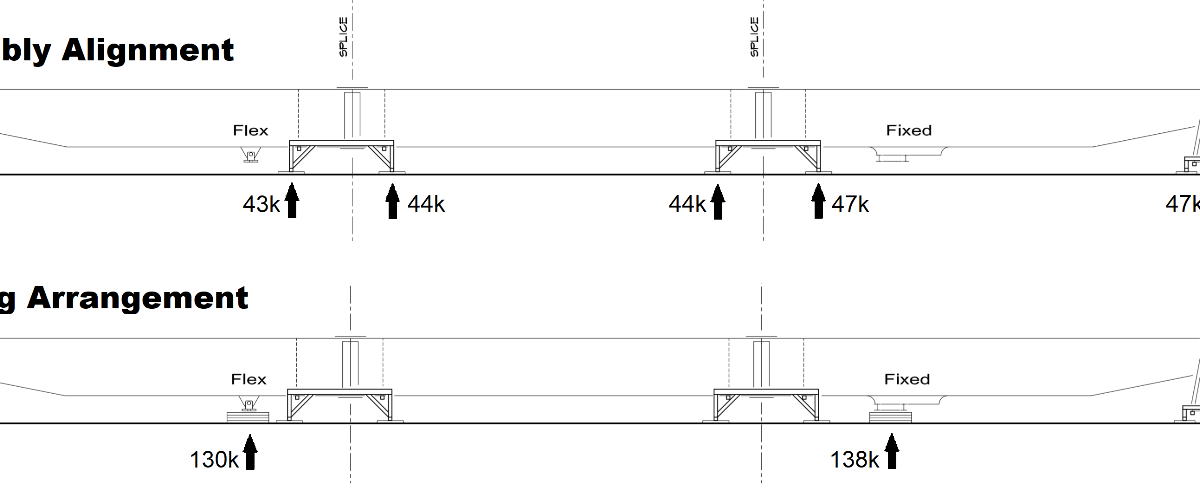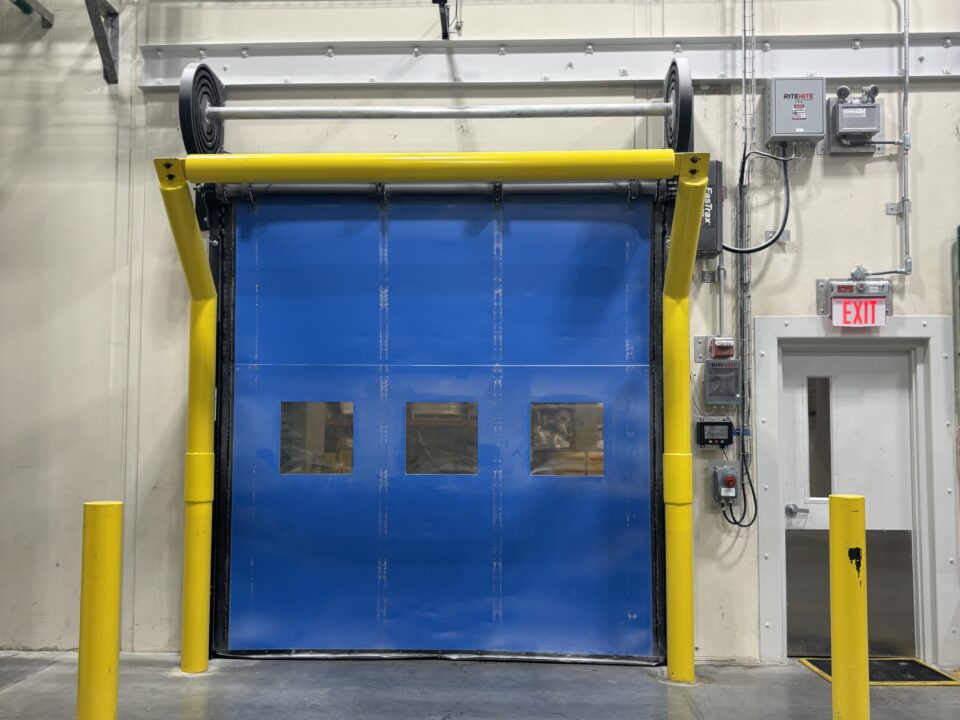
Structural Support Stand & Platforms For Tank
October 14, 2020
High Speed Packaging Platform
March 30, 2021How Do You Deal with New Challenges?
Westmont Engineering was chosen to partner with Sievert Electric and Kalmar USA on the installation of 5 new box girder cranes. Each assembled crane stands 90 ft tall with two girders, each 10 ft tall x 5 ft wide x 250 ft long, and a 156,000 lb, 60 ft wide trolley running between the girders.
The assembly process began when crane parts arrived at the assembly site on over a half mile of train cars. Westmont engineering responded to this logistical challenge by proactively determining the best place to stage each part while taking into consideration assembly sequence, minimizing double handling, and preventing blocked pathways. Mobile cranes were used to offload the trains and strategically place the equipment and components per the planned assembly site layout.
Each girder came in three sections, weighing from 75,000 lbs to 90,000 lbs per section. During assembly, these sections needed to be laser aligned within 3 millimeters laterally and vertically from end-to-end (250 ft). In addition to the tight tolerance, the girders required horizontal and vertical camber due to the ends of the girders being cantilevered over the support legs and the trolley not being centered on each girder.
 Westmont Engineering came up with an innovative solution for the challenge, then designed and built adjustable stands to aid in the assembly, alignment, and test of the girders.
Westmont Engineering came up with an innovative solution for the challenge, then designed and built adjustable stands to aid in the assembly, alignment, and test of the girders.
Assembly stands were used to set the camber and alignment by providing vertical adjustment using threaded crossbars and lateral adjustment using Teflon slide bearings. Next, test stands raised the girders off the assembly stands and supported the girders from the leg attachment locations. Supporting from the leg attachment locations simulated the unloaded configuration of the girders and allowed verification of the alignment and camber requirements.
 Because of thermal expansion affects caused by uneven radiant heating and sunlight on one side of the girder and shade on the other, girder alignment had to be done at night. If the girders were found to be out of tolerance, they were easily lowered back onto the assembly stands and readjusted for the proper camber and alignment. Westmont Engineering’s innovative approach saved time, improved accuracy, and achieved an excellent outcome for our customer.
Because of thermal expansion affects caused by uneven radiant heating and sunlight on one side of the girder and shade on the other, girder alignment had to be done at night. If the girders were found to be out of tolerance, they were easily lowered back onto the assembly stands and readjusted for the proper camber and alignment. Westmont Engineering’s innovative approach saved time, improved accuracy, and achieved an excellent outcome for our customer.





